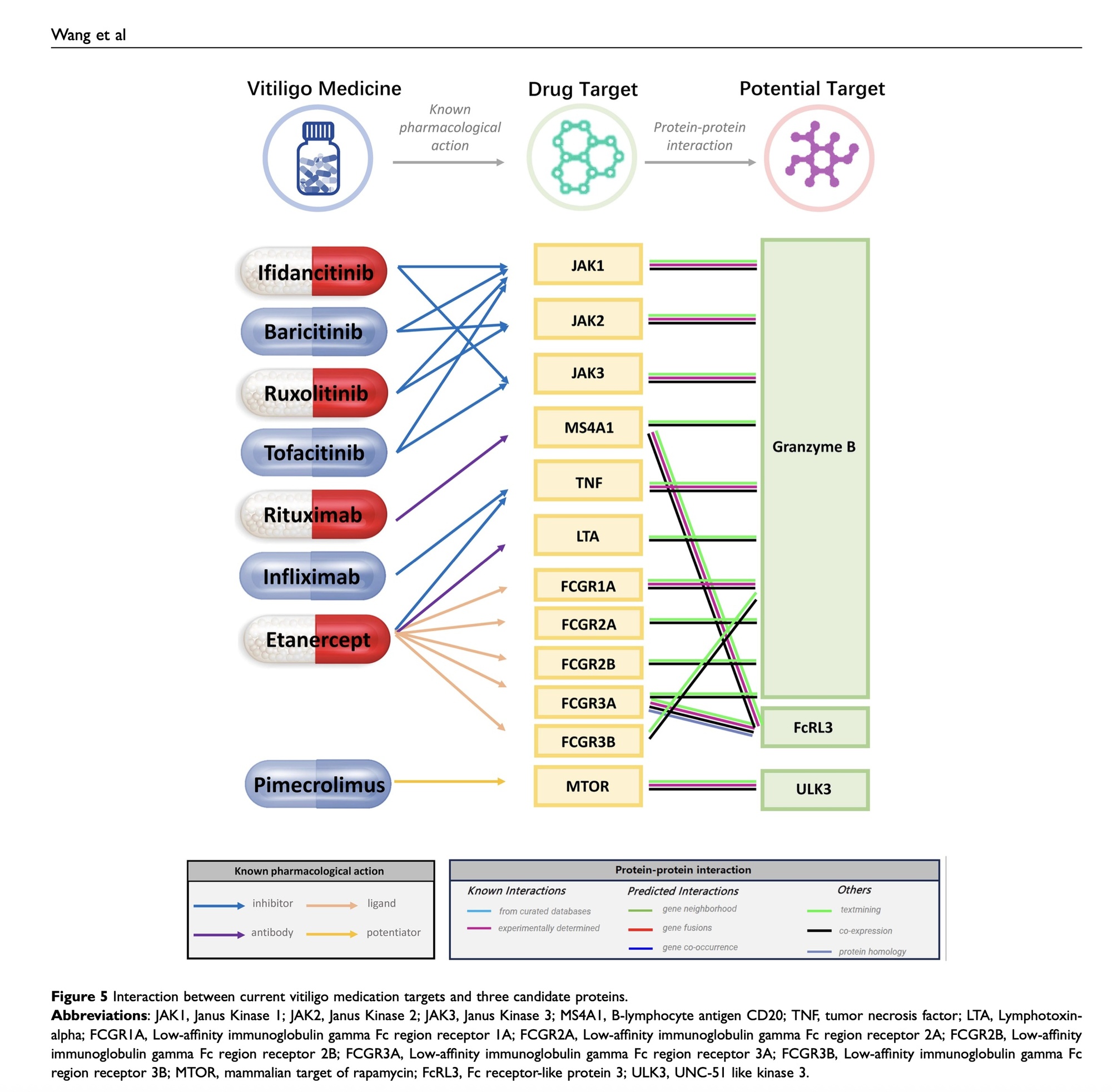New
Could These 3 Proteins Be the Key to Beating Vitiligo?
Let’s face it — vitiligo is still a puzzle wrapped in a riddle, wrapped in some stubborn skin depigmentation. And while treatments have come a long way, they’re still not cutting it for everyone. Too often, people go through rounds of therapy only to see results fade or never appear at all. Which begs the question: what if we’ve been barking up the wrong molecular tree?
A new study published in Clinical, Cosmetic and Investigational Dermatology just dropped a scientific bombshell — three promising protein targets that might reshape how we treat vitiligo in the future.
What did they find?
Researchers from China dug into massive genetic datasets using a method called Mendelian Randomization (or MR, for those who prefer less syllables and more science). This approach lets scientists separate causation from coincidence in the biological chaos of autoimmune diseases. Think of it as CSI for proteins.
After sifting through thousands of possibilities, three proteins stood out:
1. GZMB (Granzyme B)
Already known to be active in vitiligo, Granzyme B is a little enzyme with a lot of bite. It helps killer immune cells do their damage — and in the context of vitiligo, that damage is aimed at melanocytes, the pigment-making cells. This protein’s been seen lurking around vitiligo lesions, but now there’s stronger evidence that it’s not just present — it’s a key culprit
2. FCRL3
Say hello to another immune meddler. FCRL3 is linked to other autoimmune diseases like rheumatoid arthritis and lupus, and now appears to play a role in vitiligo too. It might be flipping regulatory T cells (our immune peacekeepers) into Th17 cells — fighters that stir up inflammation and send melanocytes running for cover.
3. ULK3
The wildcard of the trio. ULK3 has never been directly linked to vitiligo before, but it’s part of the machinery that regulates autophagy — the cell’s internal cleanup crew. If this process goes haywire, stressed-out melanocytes might not survive. The study hints that ULK3 could be pulling some strings here, indirectly driving pigment loss.
Why does this matter?
Because all three of these proteins are considered “druggable” — in other words, science might already have the tools (or at least the blueprints) to develop treatments that hit them where it hurts. Some even interact with meds already used in vitiligo, like JAK inhibitors.
Caveats?
Yes. The study was based on European genetic data and focused on generalized vitiligo. The findings don’t necessarily apply to everyone — and more lab work is needed to understand what’s really happening inside the skin.
Bottom line:
Still, it’s a big step. With the help of bioinformatics, what used to be guesswork is becoming precision work. And these three proteins? They just might be the new VIPs in the next generation of vitiligo therapies.
Now, before anyone rushes to the pharmacy — let’s talk timelines. Even if all goes well (and science rarely follows a straight line), moving from discovery to an approved drug typically takes 8 to 12 years. That includes preclinical testing, clinical trials, and regulatory approvals. But this kind of study helps clear the first — and often the hardest — hurdle: knowing where to aim.
Science marches on — and so do we.
Keep digging:
- Sixty Years of Vitiligo Research: Where We’ve Been and Where We’re Going
- Vitiligo Drug Pipeline Analysis and Market Insights
- Biologic Therapies for Vitiligo: A New Era of Hope

FAQOther Questions
- What is the best therapy for localized vitiligo?
Localized vitiligo, where the white patches are limited to one or a few areas of the body, can be managed with a few treatment approaches. The best therapy usually depends on th...
- Is there a traditional medicine to treat vitiligo?
Traditional remedies can play a supportive role in managing chronic, metabolic, and stress-related conditions—particularly early in the disease process, before significant tissu...
- Red Wine and Vitiligo
Recent research has revealed intriguing findings about the potential protective effects of red wine against vitiligo, using a genetic approach to study health outcomes. Red Win...
Though it is not always easy to treat vitiligo, there is much to be gained by clearly understanding the diagnosis, the future implications, treatment options and their outcomes.
Many people deal with vitiligo while remaining in the public eye, maintaining a positive outlook, and having a successful career.
Copyright (C) Bodolóczki JúliaBy taking a little time to fill in the anonymous questionnaire, you can help researchers better understand and fight vitiligo.
